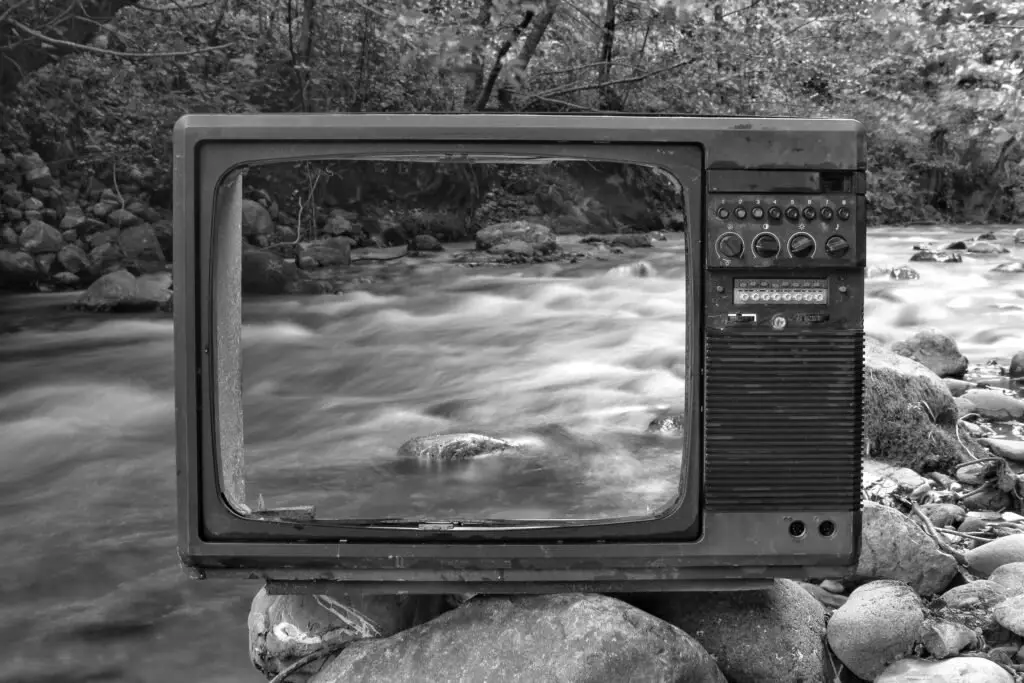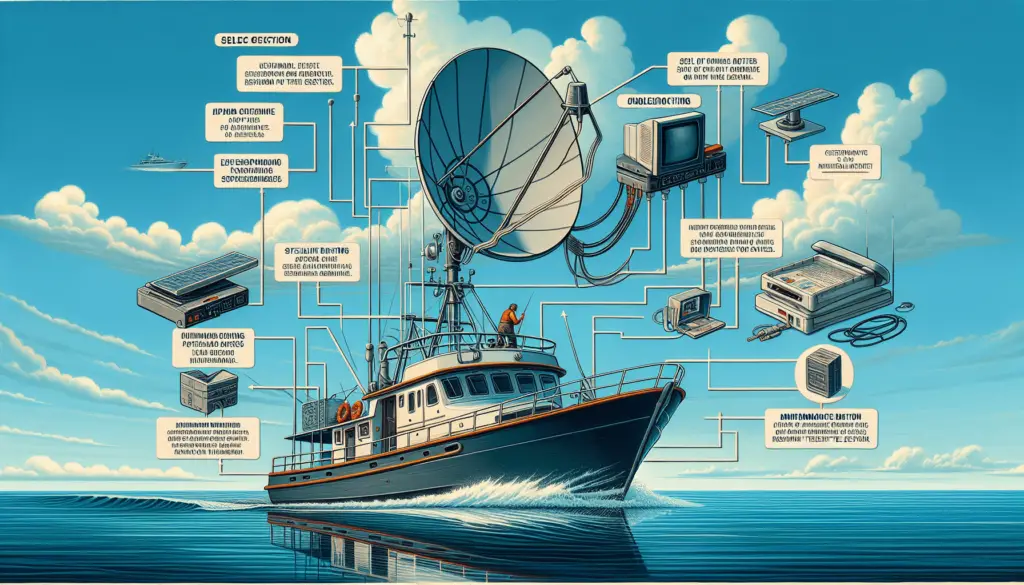So you’ve finally decided to take your boating experience to the next level and add a satellite TV system to your beloved boat. Whether you’re a novice or an experienced boater, this beginner’s guide is here to help you navigate the process with ease. From choosing the right equipment to considering your budget and installation options, we’ve got you covered. Get ready to set sail on a new adventure of entertainment and relaxation aboard your boat, as we explore the essentials of adding a satellite TV system to enhance your on-water escapades.
Choosing the Right Satellite TV System
Adding a satellite TV system to your boat can greatly enhance your on-board entertainment options. Before selecting a system, it is important to determine your needs and budget. Consider factors such as the number of channels you desire, the type of programming you enjoy, and your price range. By establishing your requirements, you can narrow down your options and make a more informed decision.
Another crucial consideration when choosing a satellite TV system for your boat is the size of your vessel. Smaller boats may have limited space available for installation, so it is essential to choose a system that fits within your boat’s dimensions. Larger boats may have more room to accommodate a larger satellite dish, giving you access to more channels and better signal quality. Assess the available space on your boat and select a system accordingly.
One important choice to make when selecting a satellite TV system is whether to opt for a manual or automatic system. Manual systems require you to manually adjust the satellite dish to find the signal. This can be time-consuming and may require frequent adjustments as you navigate. On the other hand, automatic systems can automatically locate and track the satellite signal, providing a hassle-free experience. Consider your personal preferences and the amount of time you are willing to invest in the setup and maintenance of your system before making a decision.
Understanding Satellite TV Basics
Before delving into the specifics of selecting and installing a satellite TV system for your boat, it is crucial to have a basic understanding of how satellite TV works. Satellite TV signals are transmitted from satellites orbiting the Earth to satellite dishes installed on the boat. These signals are then converted into audio and video signals that can be displayed on your TV.
Different types of satellite TV systems exist in the market. The most common ones include the Direct Broadcast Satellite (DBS) system, which offers a wide selection of channels through a small dish, and the Marine Satellite TV system, which is specifically designed for marine environments and is more robust and durable.
Dish positioning and alignment are also important aspects to consider when dealing with satellite TV systems. The dish must be correctly positioned and aligned to ensure a strong and stable signal reception. Understanding these basics will help you make more informed decisions throughout the process of adding a satellite TV system to your boat.

Selecting the Right Satellite TV Provider
Choosing the right satellite TV provider is another crucial step in the process of adding a satellite TV system to your boat. Research different satellite TV providers and compare their offerings. Look for providers that offer a wide range of channels, including the ones you enjoy watching. Consider the packages they offer and the pricing options available.
Customer support and service coverage should also be taken into consideration. Look for providers that offer reliable customer support, as you may encounter technical issues or require assistance during the setup process. Additionally, consider the coverage area of the provider to ensure that you will be able to receive a signal as you navigate through different waters.
By thoroughly researching and comparing different satellite TV providers, you can ensure that you select the one that best meets your needs and provides you with a seamless viewing experience on your boat.
Installing the Satellite TV System
Once you have chosen the satellite TV system and provider that best suit your needs, it is time to install the system on your boat. The first step is to locate the ideal mounting location for the dish. Take into account factors such as line-of-sight, obstruction-free areas, and the structural integrity of the mounting surface. Ensure that the dish is placed in a position that maximizes signal strength and minimizes the risk of damage.
Securely installing the satellite dish is essential to ensure its stability while your boat is in motion. Use mounting brackets and hardware specifically designed for marine environments to withstand the challenges of being on the water. Following the manufacturer’s instructions, securely fasten the dish to the chosen location, ensuring that it is firmly in place.
Properly connecting the cables and wires is crucial for the successful installation of your satellite TV system. Use high-quality cables that are designed for satellite TV applications to minimize signal loss. Connect the cables to the dish, the receiver, and the TV following the provided instructions. Take care to avoid any sharp bends or kinks in the cables, as this can compromise signal quality.

Positioning and Aligning the Dish
After installing the dish, it is important to position and align it properly to ensure optimal signal reception. Line-of-sight requirements mean that the dish must have an unobstructed view of the satellite in order to receive a strong signal. Consider any potential obstacles, such as tall buildings, trees, or other boats, and position your boat accordingly to maximize the line-of-sight.
Using a satellite finder or compass can greatly assist in aligning the dish. These tools help identify the azimuth and elevation angles required to point the dish in the right direction. Follow the manufacturer’s instructions and adjust the dish until the highest signal strength is achieved.
To fine-tune the dish for optimal signal strength, make small adjustments in azimuth and elevation while monitoring the signal strength on your TV screen. Achieving the highest signal strength will ensure a clear and uninterrupted viewing experience while on your boat.
Setting Up the Receiver and TV
Once the dish is properly positioned and aligned, it is time to set up the receiver and connect it to your TV. Choose a receiver that is specifically designed for marine applications, as these are usually more durable and able to withstand the challenges of being on a boat. Connect the receiver to your TV using the cables provided, following the instructions provided by the manufacturer.
After connecting the receiver to your TV, you will need to activate and program the receiver. This process may vary depending on the specific manufacturer and model of your receiver. Follow the instructions provided in the user manual to activate the receiver and program it to receive the satellite TV signal.

Optimizing Signal Reception
To ensure the best possible signal reception on your boat, there are a few additional steps you can take. If you find that the signal strength is weaker than desired, consider using a signal booster or amplifier. These devices can help amplify the signal and improve reception, especially in areas with weaker signals.
Proper cable routing and connection are also important for optimizing signal reception. Avoid running the cables near sources of interference, such as power lines or other electronic devices. Keep the cables as short as possible and ensure that they are securely connected to minimize signal loss.
Lastly, minimize obstructions by keeping the dish clean and free from debris. Regularly inspect the dish for any dirt, bird droppings, or other obstructions that may hinder signal reception. Cleaning the dish with a soft cloth and water will help maintain optimal signal strength.
Troubleshooting Common Issues
While adding a satellite TV system to your boat can greatly enhance your on-board entertainment, there may be times when you encounter issues. If you experience problems with your signal, start by checking the cable connections and signal strength. Ensure that all cables are securely connected and that there are no visible damages.
If the issue persists, try resetting or rebooting the receiver and the TV. This can often resolve minor technical glitches and restore proper functioning. Refer to the manufacturer’s instructions on how to perform a reset or reboot.
If you are unable to resolve the issue on your own, do not hesitate to contact the customer support of your satellite TV provider. They will be able to assist you further and provide guidance on how to troubleshoot and resolve any technical problems you may encounter.

Maintenance and Care
To ensure the longevity and optimal performance of your satellite TV system, it is important to perform regular maintenance and care. Regularly inspect the dish and cables for any signs of damage, such as loose connections or frayed cables. Tighten any loose connections and replace any damaged cables to avoid signal loss.
Protecting the system from harsh weather conditions is also crucial. If your boat will be exposed to extreme temperatures, strong winds, or heavy rains, consider adding additional protection to the dish to prevent damage. Covers or enclosures specifically designed for marine satellite TV systems can help shield the dish from the elements.
Updating the software and firmware of your satellite TV system is also important. Manufacturers often release updates to improve performance and add new features. Check the manufacturer’s website regularly and follow their instructions to keep your system up to date.
Enjoying Satellite TV on Your Boat
Once you have successfully installed and optimized your satellite TV system, it is time to sit back, relax, and enjoy your favorite shows and channels while on your boat. Explore the channel lineup and discover new programs that cater to your interests. Adjust the settings, such as picture quality and sound, to your preference to enhance your viewing experience.
Furthermore, having a satellite TV system on your boat provides a great opportunity to share the experience with family and friends. Invite them onboard and enjoy watching movies, sports events, or other programs together. The added entertainment value will surely make your boating trips even more enjoyable and memorable.
Adding a satellite TV system to your boat can significantly enhance your boating experience by providing you with a wide range of channels and programming options. By understanding the basics, selecting the right system and provider, and following proper installation and maintenance guidelines, you will be able to enjoy satellite TV on your boat for years to come.


